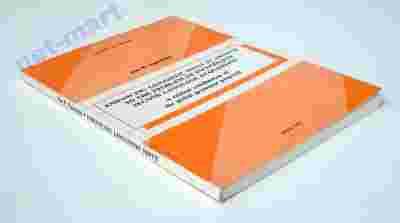|
|
"ENHANCING LINGUISTIC INPUT in ANSWER to the PROBLEM of INCOMPLETE SECOND LANGUAGE ACQUISITION. A critical redefinition of the global grammar proposal ", J.P.ZALEWSKI ; UP, OPOLE 1995 ; nakład : 150 ; stan : bdb; przesyłka polecona : 9,30 zł.
CONTENTS :
ABSTRACT ........................................... 7
ACKNOWLEDGMENTS.................................... 9
CHAPTER I: THE PROBLEM AND ITS BACKGROUND................. 11
1.1. Goals of the Study..................................... 11
1.2. Views of Language and Language Error......................... 13
1.3. Error Analysis....................................... 15
1.4. Problem Statement.................................... 17
1.4.1. You Can't Learn Without Goofing......................... 17
1.4.2. Use of Errors in the Present Study........................ 18
1.4.3. The Local/Global Error Distinction and the B&K Hypothesis......... 19
1.4.4. The Local/Global Grammar Distinction ..................... 20
1.4.5. Challenges to the Local/Global Distinction.................... 21
1.4.6. Questions Asked in the Present Study...................... 22
1.4.7. What Kind of Global Grammar ?......................... 23
1.4.8. The Extended B&K Hypothesis.......................... 24
1.5. Notation Used in This Study............................... 24
CHAPTER II: GRAMMAR, CONSCIOUSNESS, AND SECOND LANGUAGE LEARNING............ 27
2.1. Grammar Instruction and Consciousness........................ 27
2.2. Meanings of Consciousness................................ 32
2.3. Analysis and Control as Factors in Language Learning................ 37
2.4. Incidental and Implicit Learning............................. 40
2.5. Language Learning Through Error Recovery...................... 44
2.6. Language Learning as Grammar Learning....................... 48
CHAPTER III: DATA COLLECTION............................ 55
3.1. Stages in the EA Procedure .......................... 55
3.2. Corpus Selection...................................... 55
3.3 Error Identification: Definitional Problems....................... 56
3.4. Error Identification: The Problem of Intended Meaning................ 57
3.5..Error Identification: Communicative Breakdowns versus Miscommunication .... 60
CHAPTER IV: DATA ANALYSIS............................... 63
4.1. Analytical Framework......................... 63
4.1.1. Sentence and Text: Structure and Cohesion................... 64
4.1.2. Cohesion and Textual Breakdowns........................ 65
4.1.3. Lower-Level Syntax: Is It Just Local ? ...................... 66
4.1.4. The Local/Global Distinction Reconsidered................... 67
4.1.5. Levels of Errors.................................. 70
4.2. Structural Errors..................................... 73
4.2.1. PL Errors...................................... 73
4.2.2. CL Errors ............................. 75
4.2.3. SL Errors...................................... 78
4.3. Discourse-Pragmatic Errors............................... 80
4.3.1. Connectors..................................... 80
4.3.2. Pro-forms...................................... 87
4.3.3. Ellipsis....................................... 94
4.3.4. Recurrence I: Number and Person........................ 104
4.3.5. Recurrence II: Tense and Modality........................ 109
4.3.6. Parallelism..................................... 118
4.3.7. Word Order..................................... 125
CHAPTER V: SUMMARY, CONCLUSION, IMPLEMENTATION............139
5.1. Global Grammar: Summary............................... 139
5.2. Global Grammar: Conclusion.............................. 142
5.3. Pedagogical Implementation: The LIE Method..................... 143
REFERENCES......................................... 147 |
|
|

